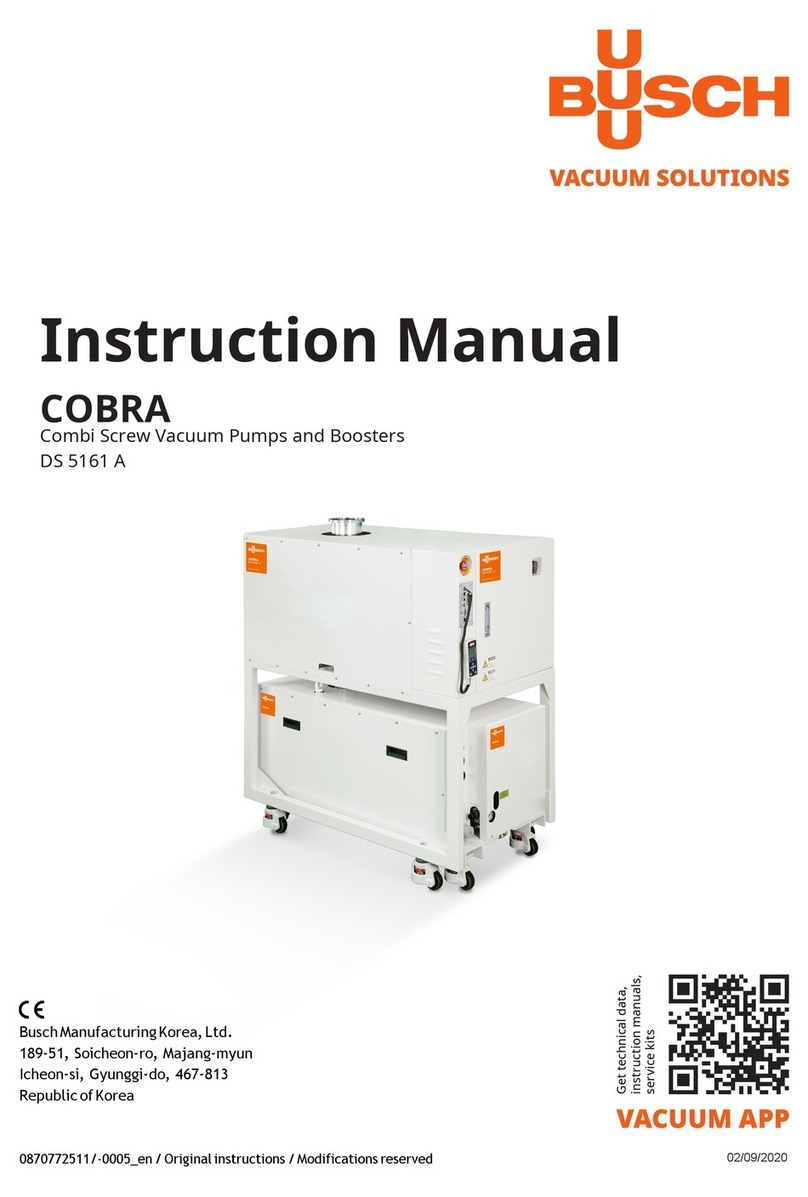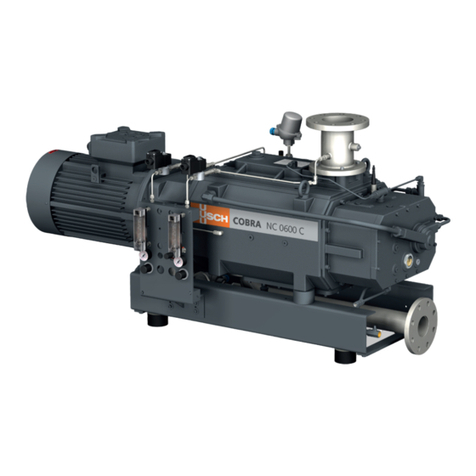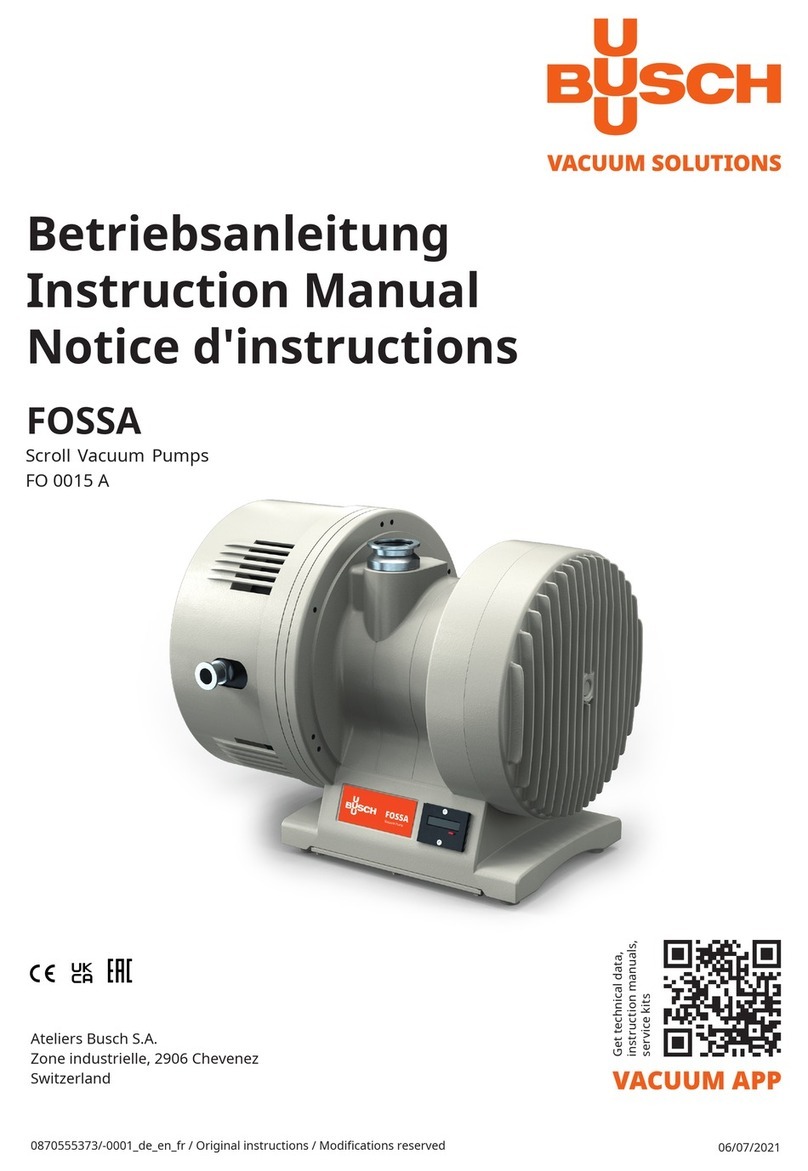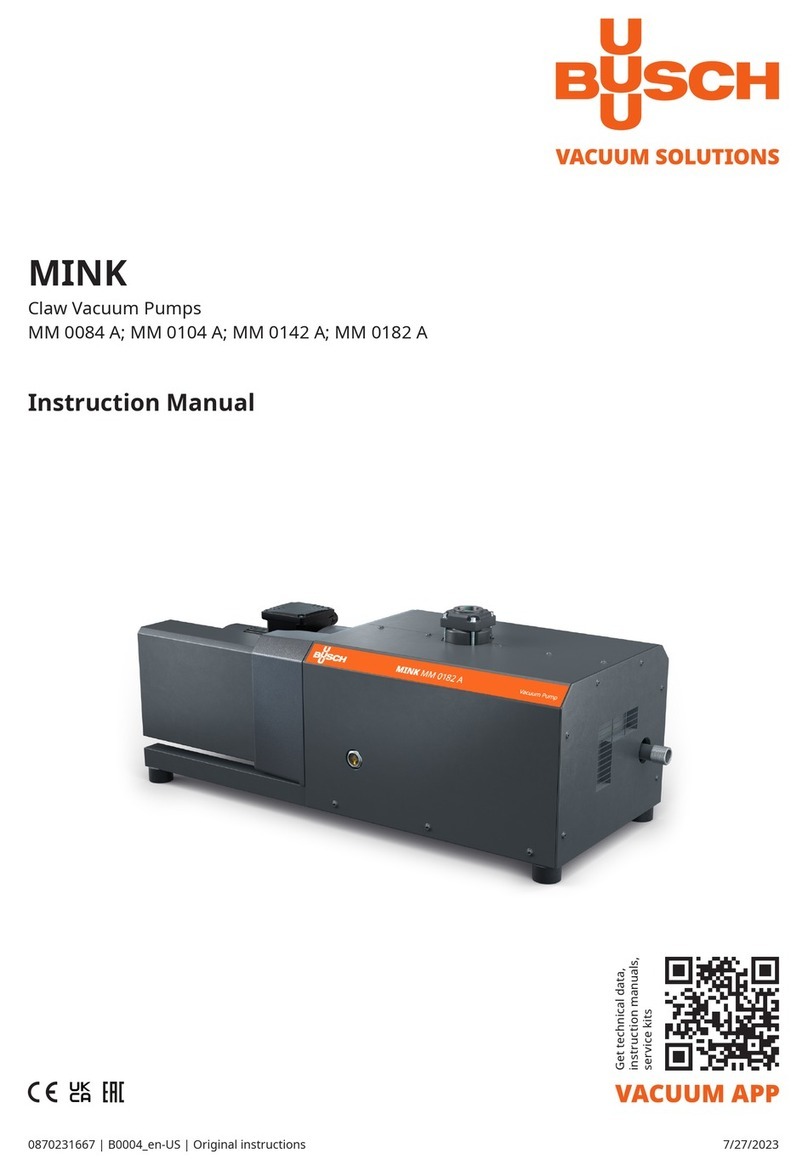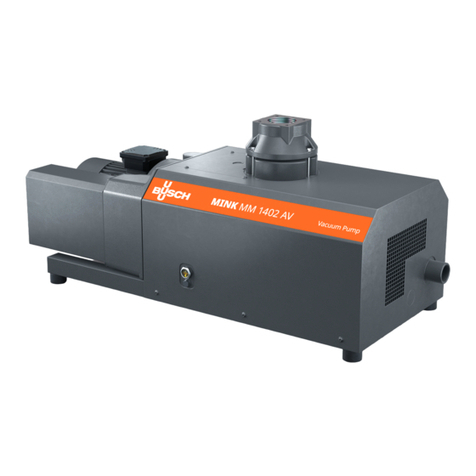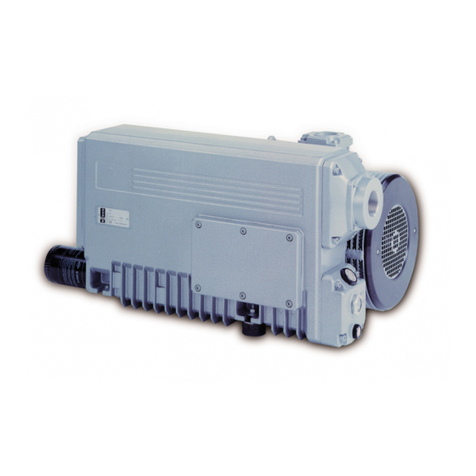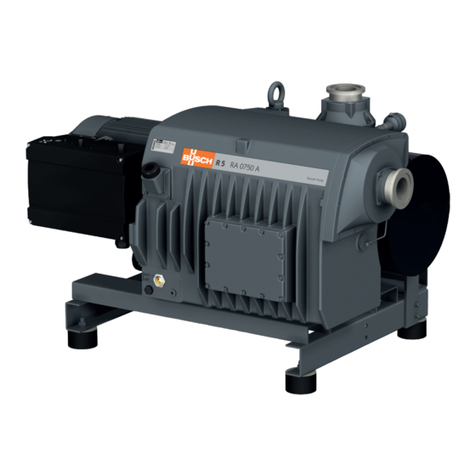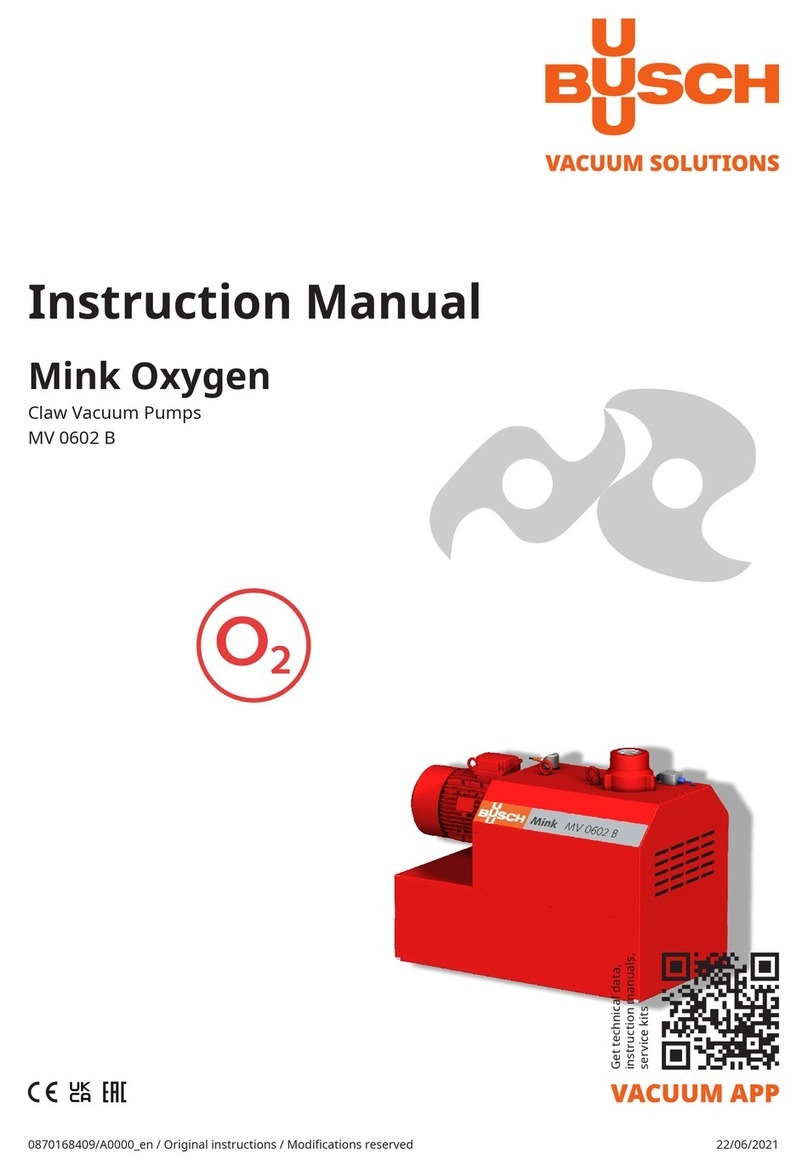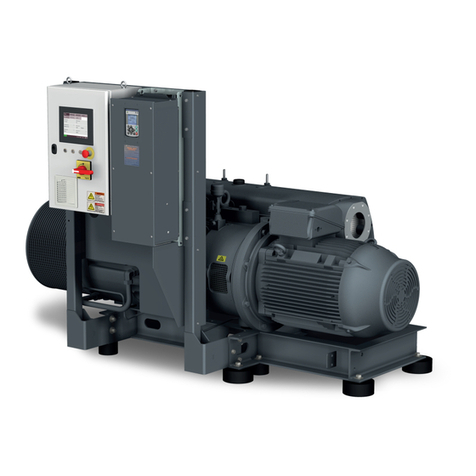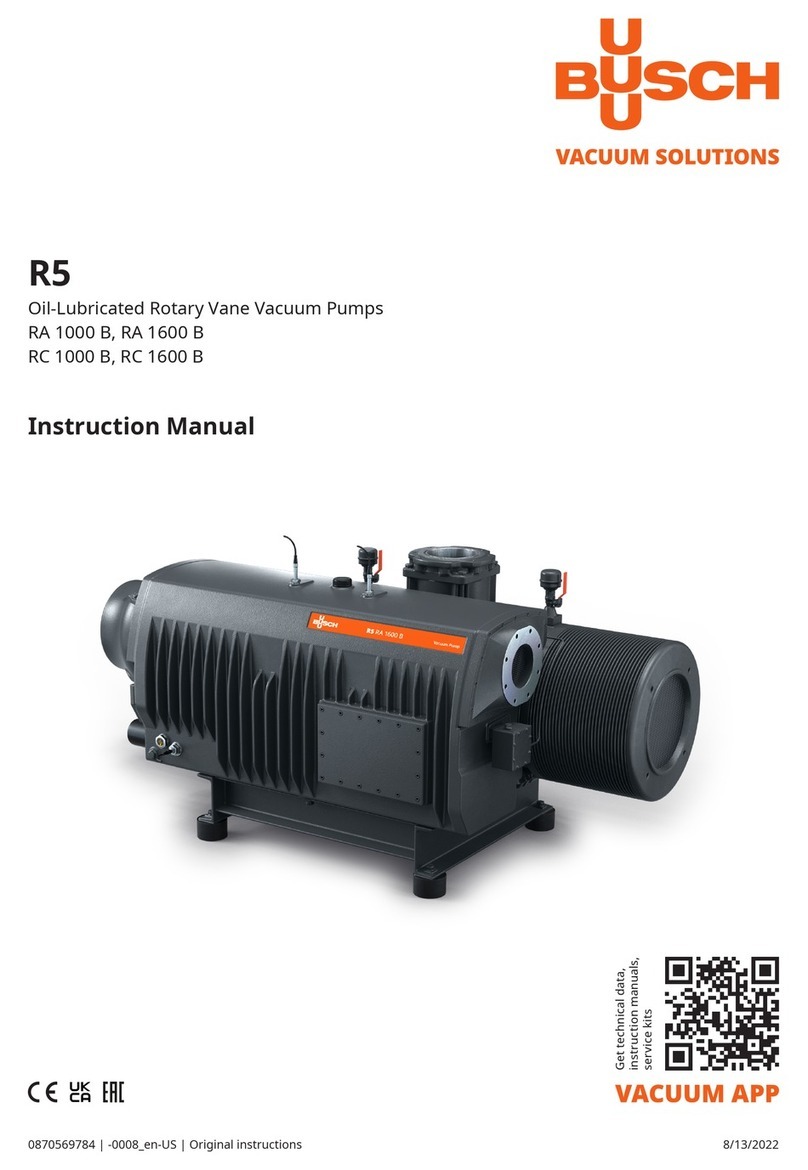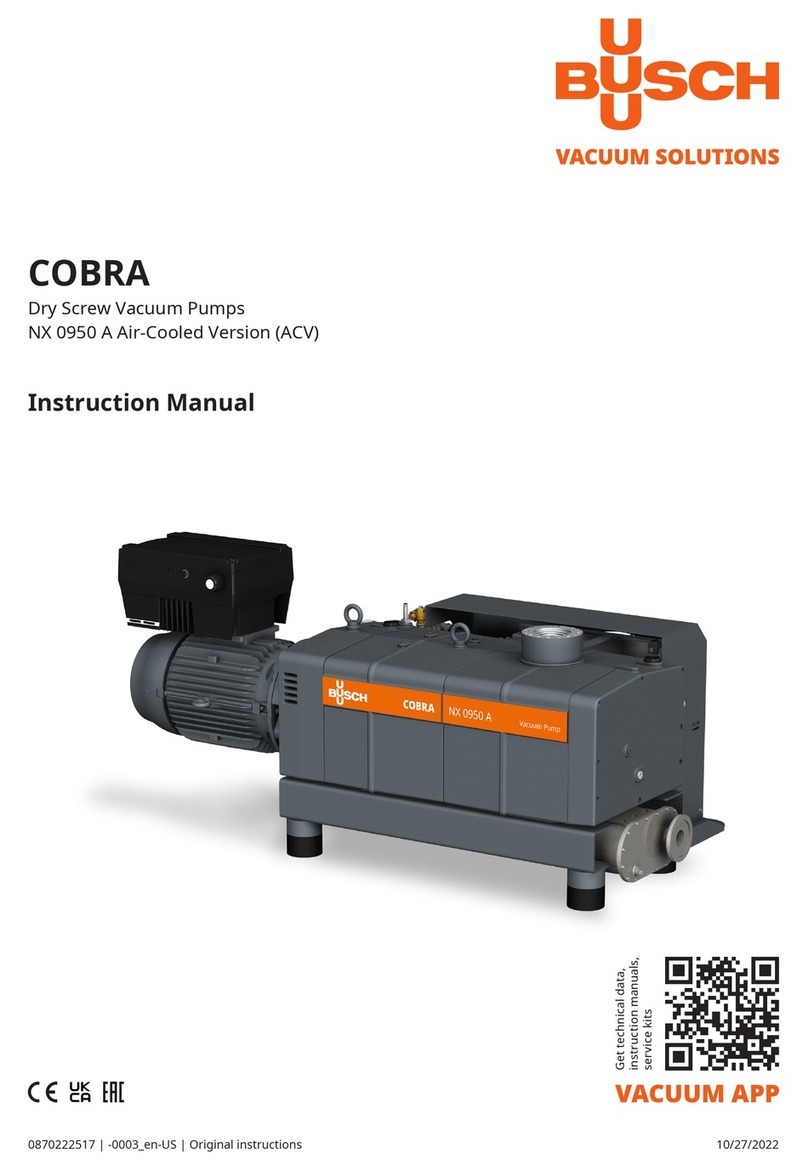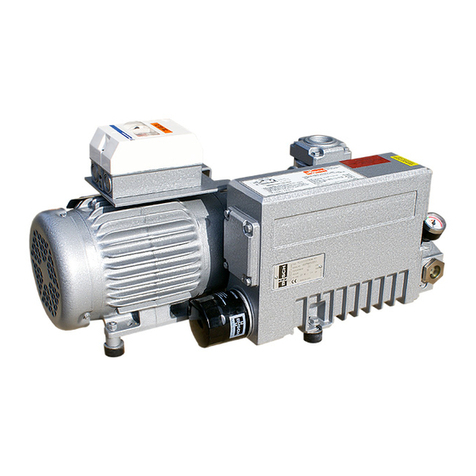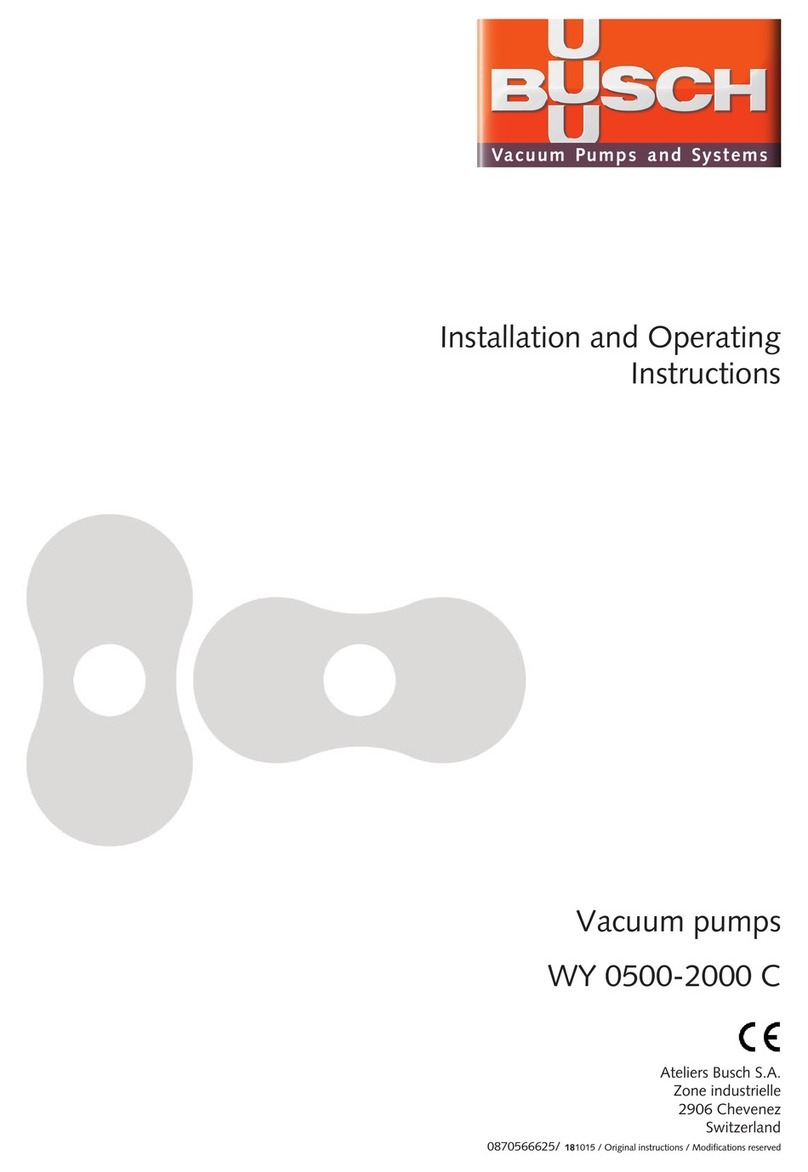
NOTE: VCI is the abbreviation for “volatile corrosion inhibitor”. The
VCI molecule is an organic corrosion inhibitor in the vapour phase.
Integrated in various carriers such as film, cardboard, paper, foam,
liquid and powder, it protects the parts against corrosion as a result of
its action in the vapour phase. However, VCI packaging can attack
synthetic surfaces and surfaces of other elastomers. If in doubt, please
contact your nearest distributor. VCI packaging provides several years
of protection against corrosion, even under the harshest of conditions:
overseas shipment, extended storage before use.
lWrap the vacuum pump in a VCI film
lStore the vacuum pump
–if possible, the vacuum pump should be stored in its original
packaging,
–indoors,
–dry,
–in a dust-free and
–vibration-free room
Start-up of the vacuum pump after storage:
lMake sure that all protective elements, stoppers or adhesive tapes
attached before preservation have been removed
lSwitch on the vacuum pump in the sequence described in the
chapter “Installation and Commissioning”
Installation and Commissioning
Installation prerequisites
CAUTION
In case of non-compliance with the installation prerequisites,
particularly in case of insufficient cooling:
Risk of damage or destruction of the vacuum pump and its
components!
Risk of personal injury!
The installation prerequisites must be complied with.
lPlease ensure that the integration of the vacuum pump is
compliant with the safety requirements of the Machine Directive
2006/42/EC (concerning the responsibility of the system’s
manufacturer into which the vacuum pump is to be incorporated,
please also refer to the note in the EU-Declaration of Conformity).
WARNING
Local regulations regarding the motors and electric control
elements must be observed when installing the pump in potentially
explosive environments. Make sure before start-up that all safety
measures have been followed.
Local installation
lMake sure that the environment of the vacuum pump is not
potentially explosive
lMake sure that the following ambient conditions are fulfilled:
–Ambient temperature: 0 ... 40 °C (32 ... 104 °F)
–Ambient pressure: atmosphere
–Humidity range: 20 to 95%
–Altitude: up to 1000 m
lMake sure that the cooling water fulfills the following
requirements:
–Temperature: 10 - 25 °C
–Overpressure: 2 - 5 bar (relative)
–Water hardness: < 5 ° dGH
NOTE: 1° (german degree = 1° dGH) = 1,78° (french degree) = 1,25 e
(english degree) = 17,9 mg/kg CaCO3 (american hardness)
–Minimum flow rate: 3 - 4 l/ min for the standard version
lMake sure that the cooling water is neutral and clean
lMake sure that the cooling water outlet is unpressurised
lMake sure that the nitrogen fulfills the following requirements:
–Overpressure: 1,5 bar
–Approximate flow rate: 10 - 22 l/ min
lMake sure that the ambient conditions correspond to the
protection class of the motor (according to nameplate)
lMake sure that the vacuum pump is placed on or fastened to a
horizontal surface
lMake sure that the vacuum pump is level
lMake sure that the vacuum pump is at least 1 m away from any
wall to ensure good cooling
lMake sure that the vacuum pump is easily accessible and that the
selected installation site fulfills the requirements for
assembly/dismantling
lMake sure that no temperature-sensitive parts (for example, of
plastic, wood, cardboard, paper, electronic parts) come into
contact with the hot surfaces of the vacuum pump
lMake sure that the installation site or assembly area is ventilated in
such a way that adequate cooling of the vacuum pump is ensured
CAUTION
The surface temperature of the vacuum pump can exceed 50°C
when the vacuum pump is in operation.
Danger of burns!
lMake sure that no-one can touch the vacuum pump accidentally.
If necessary, attach safeguard
lMake sure that the oil sight glasses (OSG 1, 2, 3) are easily
accessible
If oil changes are to be made on site:
uMake sure that the oil drain and oil filler are easily accessible
Inlet connection
lMake sure that the protection that was attached to prevent
penetration of particles during transport has been removed before
the vacuum pump is connected to the vacuum line
CAUTION
Do not put hands into the inlet aperture.
Risk of body damage!
CAUTION
The intake of liquids or solid particles can lead to the destruction of
the vacuum pump
If the sucked gas contains dusts or solid foreign bodies:
uMake sure that a filter or protective grating is installed at the
extraction point
lMake sure that the nominal diameter of the intake line is at least
equal to the diameter of the intake flange of the vacuum pump to
prevent a drop in the performance of the vacuum pump in the case
of a smaller cross-section
lMake sure that the vacuum pump is connected with leakproof lines
Installation and Commissioning
Page 10 0870760874 (En)
BC 1001 G
